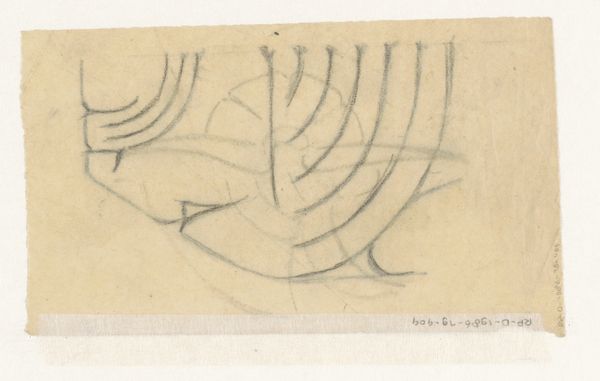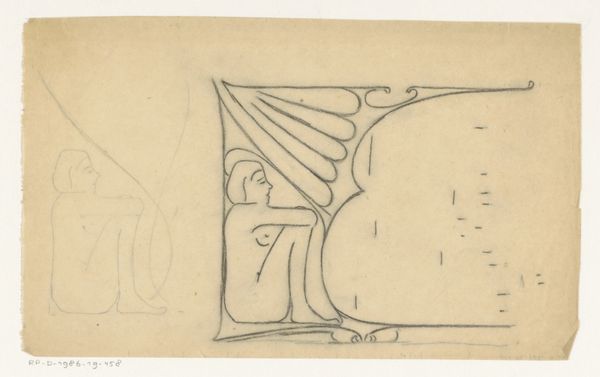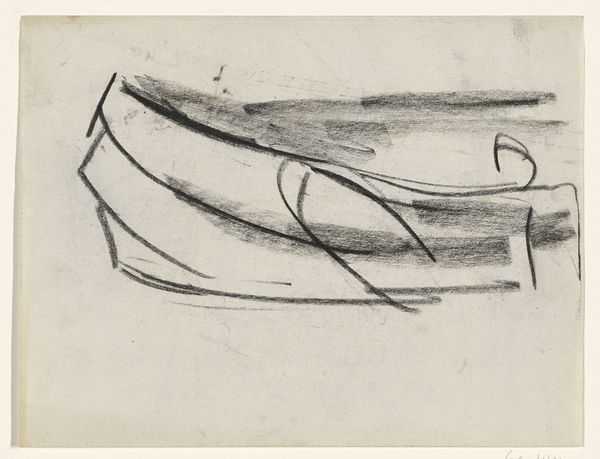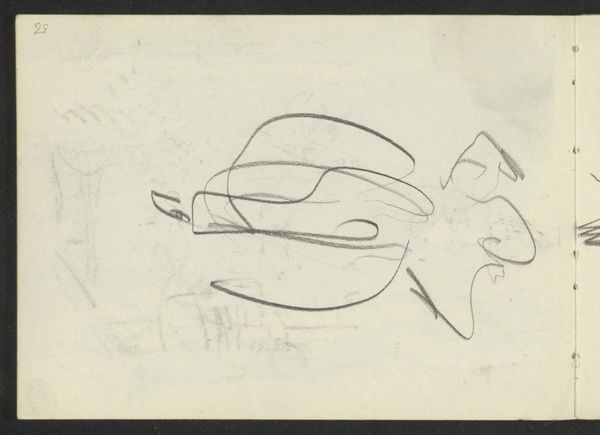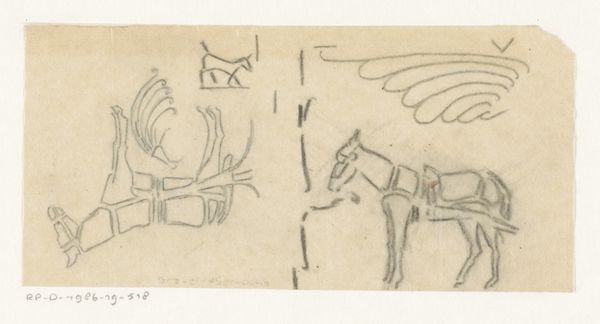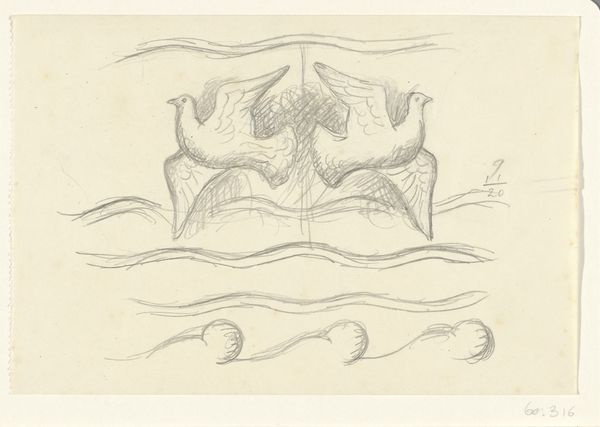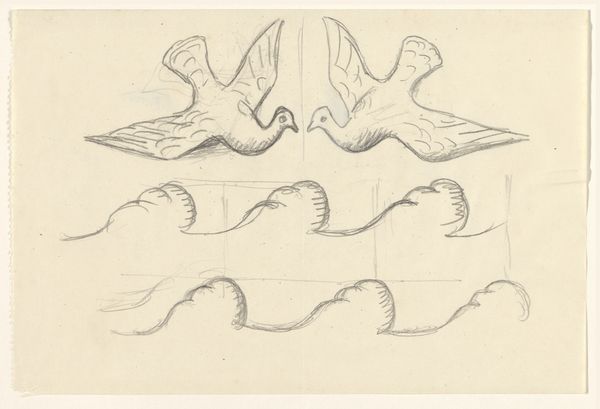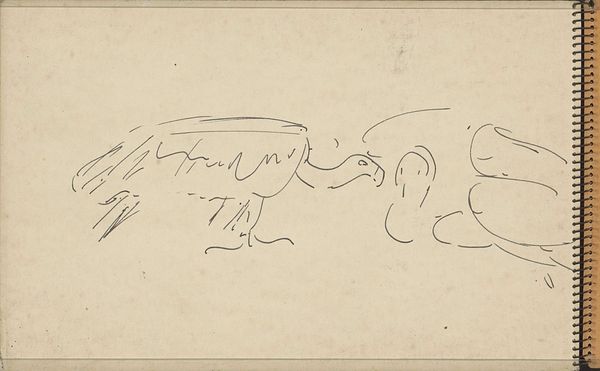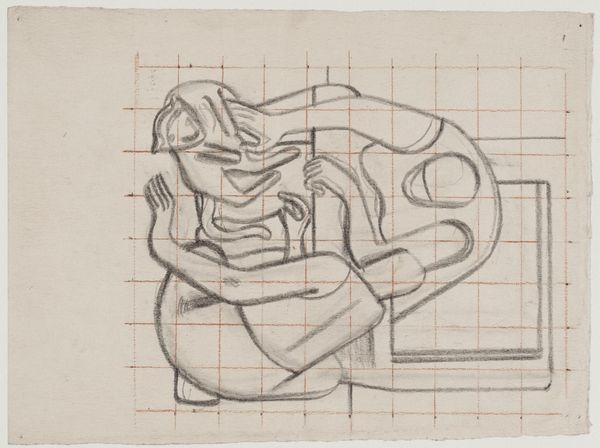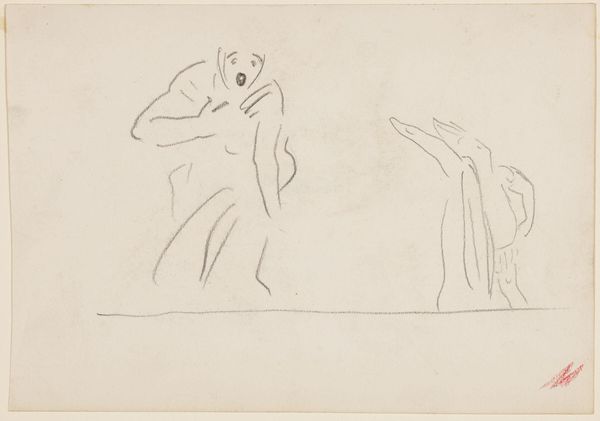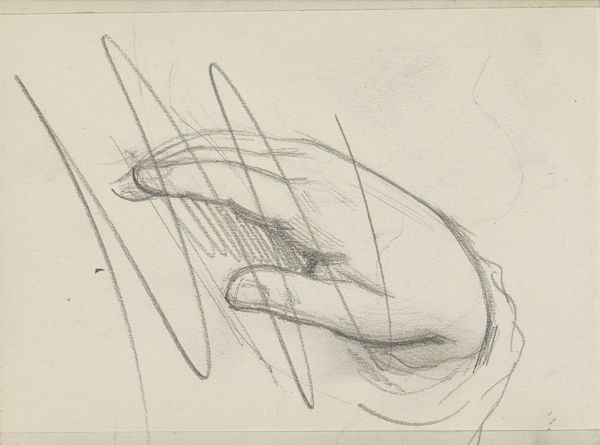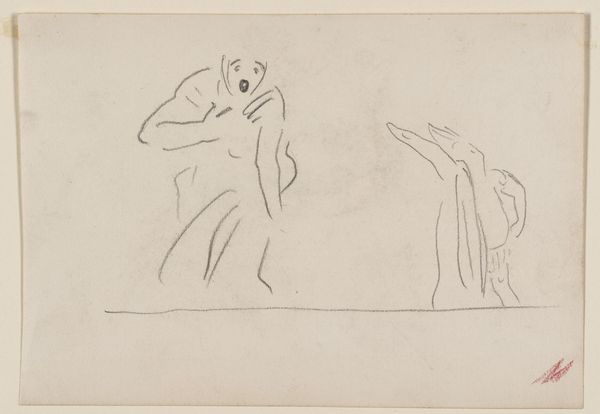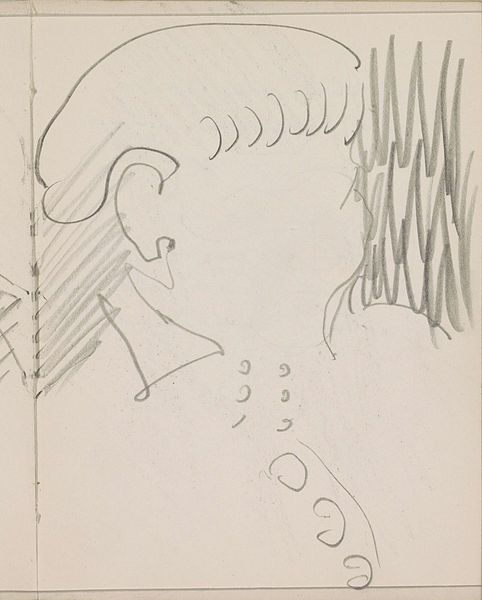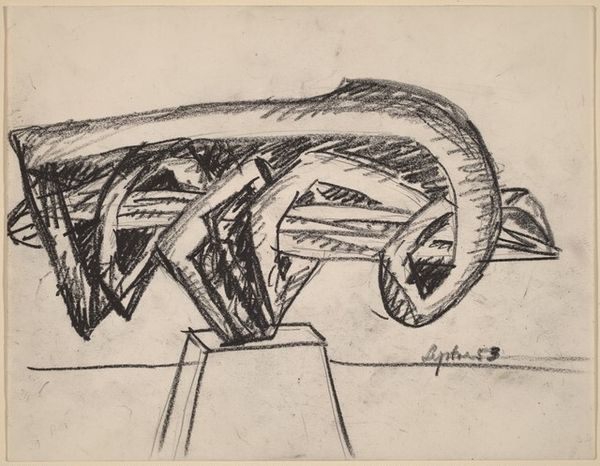
drawing, pencil, graphite
#
drawing
#
amateur sketch
#
toned paper
#
light pencil work
#
pen sketch
#
pencil sketch
#
figuration
#
form
#
personal sketchbook
#
ink drawing experimentation
#
pen-ink sketch
#
pencil
#
abstraction
#
graphite
#
sketchbook drawing
#
sketchbook art
Dimensions: height 74 mm, width 126 mm
Copyright: Rijks Museum: Open Domain
Editor: Here we have Reinier Willem Petrus de Vries’ “Gestileerde leeuwenkop,” or “Stylized Lion’s Head,” dated between 1884 and 1952. It’s a pencil and graphite drawing on toned paper. The lines are so simple, almost minimalist, yet the image still manages to evoke a feeling of power. What can you tell us about this piece? Curator: What I see is a fascinating window into the artist's process, hinting at the role of the sketchbook in artistic development. Given the time period, and the artist’s clear engagement with abstraction, I wonder if this sketch might be related to broader trends in the representation of power and national identity during the early to mid-20th century. How might a "stylized" lion's head, stripped of detail, serve as a potent symbol in a world grappling with shifting political landscapes? Editor: So, the very act of simplifying the lion – stripping away details – could actually amplify its symbolic weight? Curator: Exactly. Think about the use of animal symbols in propaganda. A simplified, graphic image can be more easily reproduced and disseminated, becoming a powerful tool for shaping public opinion and reinforcing cultural narratives. Is this just an innocent sketch, or a reflection of its cultural milieu? Editor: That’s a great point! I was focusing on the aesthetic, but it’s fascinating to consider the potential political undercurrents. It makes me think about how even a seemingly simple drawing can be loaded with historical context. Curator: Precisely. And by thinking about the institutions of art, can we interpret what might make an artist select it for exhibition. I, for one, have more to consider. Editor: Me too, thanks!
Comments
No comments
Be the first to comment and join the conversation on the ultimate creative platform.
